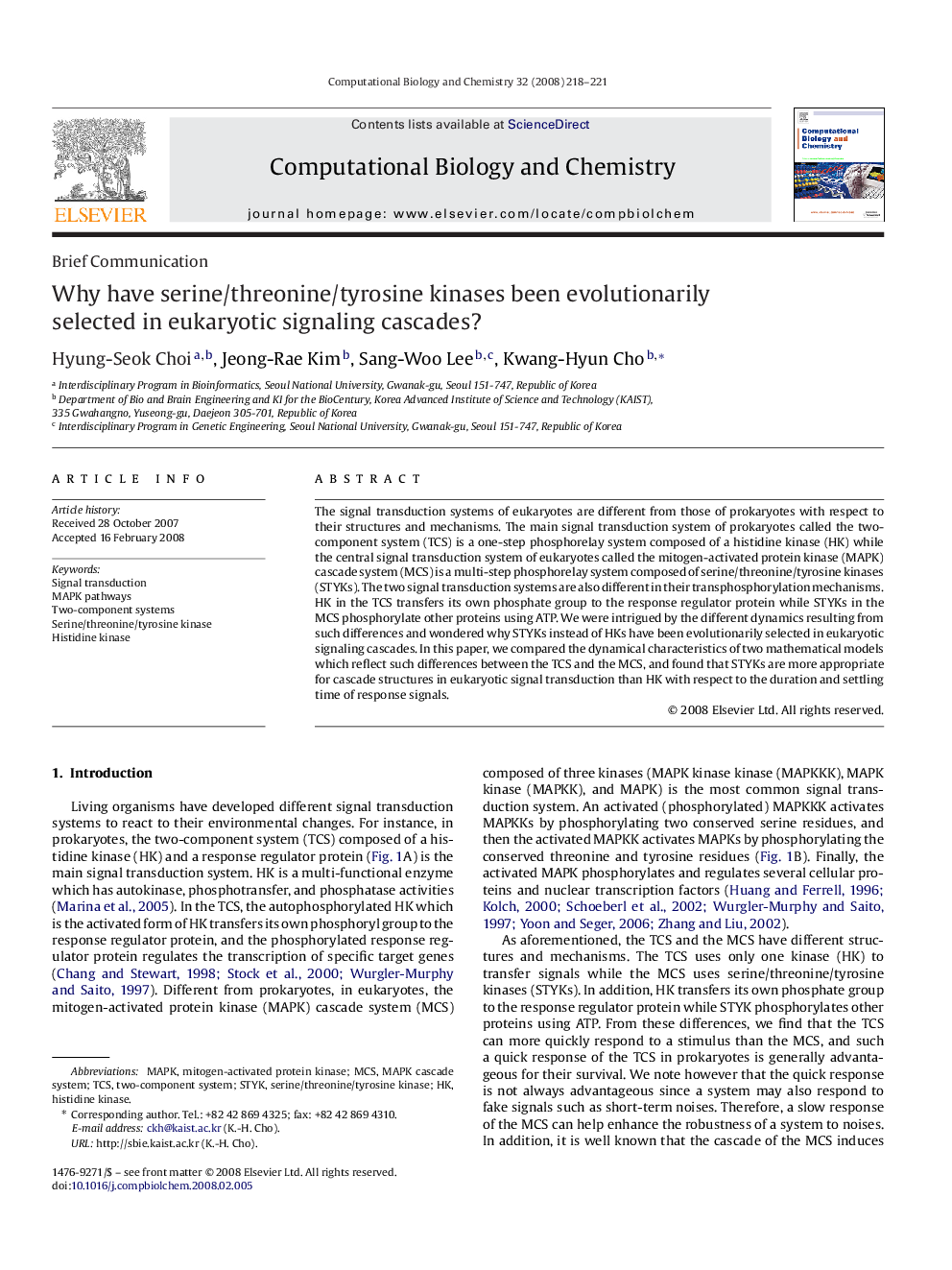| کد مقاله | کد نشریه | سال انتشار | مقاله انگلیسی | نسخه تمام متن |
|---|---|---|---|---|
| 15333 | 1404 | 2008 | 4 صفحه PDF | دانلود رایگان |

The signal transduction systems of eukaryotes are different from those of prokaryotes with respect to their structures and mechanisms. The main signal transduction system of prokaryotes called the two-component system (TCS) is a one-step phosphorelay system composed of a histidine kinase (HK) while the central signal transduction system of eukaryotes called the mitogen-activated protein kinase (MAPK) cascade system (MCS) is a multi-step phosphorelay system composed of serine/threonine/tyrosine kinases (STYKs). The two signal transduction systems are also different in their transphosphorylation mechanisms. HK in the TCS transfers its own phosphate group to the response regulator protein while STYKs in the MCS phosphorylate other proteins using ATP. We were intrigued by the different dynamics resulting from such differences and wondered why STYKs instead of HKs have been evolutionarily selected in eukaryotic signaling cascades. In this paper, we compared the dynamical characteristics of two mathematical models which reflect such differences between the TCS and the MCS, and found that STYKs are more appropriate for cascade structures in eukaryotic signal transduction than HK with respect to the duration and settling time of response signals.
Journal: Computational Biology and Chemistry - Volume 32, Issue 3, June 2008, Pages 218–221